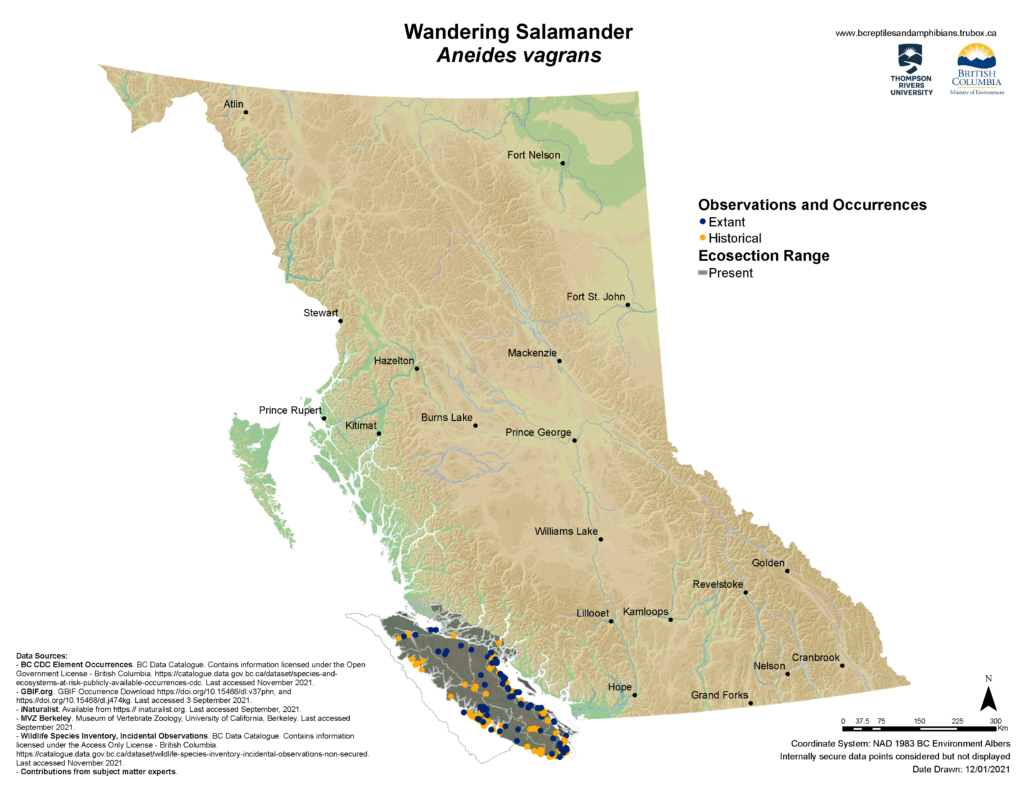Credit: John Clare
Wandering Salamander
Aneides vagrans
Description
The Wandering Salamander is relatively small and slender, reaching a maximum total length of 13 cm. They have small limbs, a tail that is circular in cross-section, and 14-16
costal groovesDefinition:Grooves along the sides of a salamander’s body that increase the surface area of the skin and creates channels for water to flow and collect on their body. This is important to prevent their skin from drying out.. The inner toe on each foot is comparatively short, and all toes have squared ends. Wandering Salamanders are generally dark brown to dark grey with light grey, bronze, or gold mottling. The belly is grey with light-coloured flecking. Juveniles can be identified by their bronze dorsalDefinition:Relating to the top or back. stripe that fades with age.
Listen to the Indigenous words for “salamander” here!
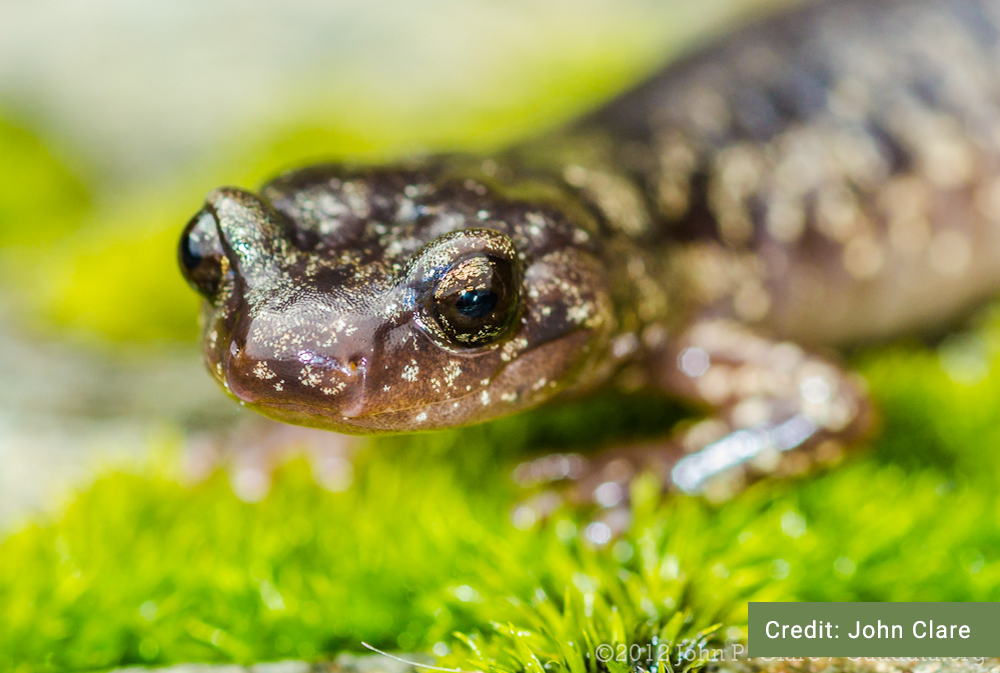
Similar Species
The Wandering Salamander could be mistaken for the Northwestern Salamander, Ensatina, or Western Red-backed Salamander. The Northwestern Salamander is larger and stouter, has distinct parotid glandsDefinition:An external skin gland on the back, neck, and/or shoulder of some toads, frogs, and salamanders, usually visible as a bump. It can secrete a number of milky alkaloid substances which help deter predators. on the head, and lacks nasolabial groovesDefinition: Small grooves that extend from the upper lip to the nostril in lungless salamanders. The salamander smells by touching its snout to a surface (nose tapping), allowing odour particles to travel up the groove into sensory cells in the nose. or patterning. The Ensatina lacks patterning except for some light flecking on the sides, and has a distinctive constriction at the base of the tail. Western Red-backed Salamanders have much smaller legs relative to their bodies.
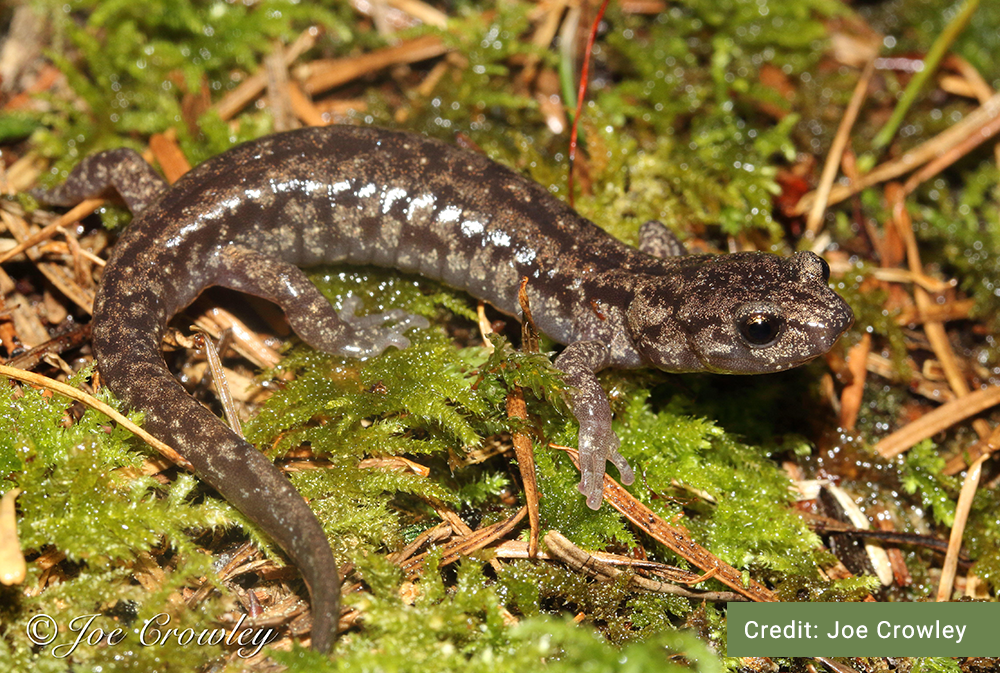
Wandering Salamander
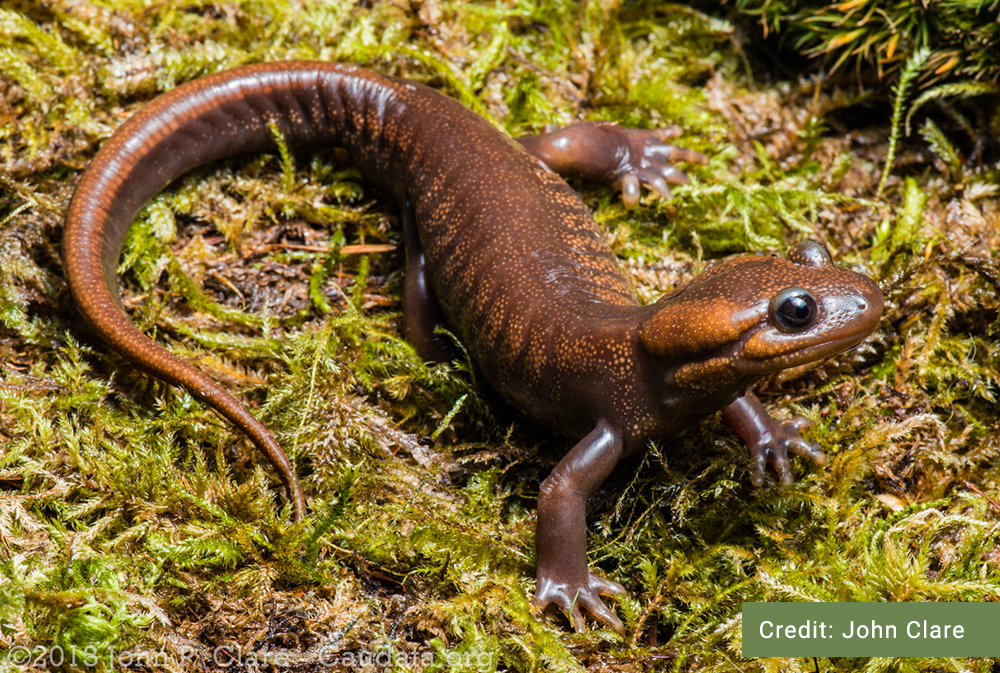
Northwestern Salamander
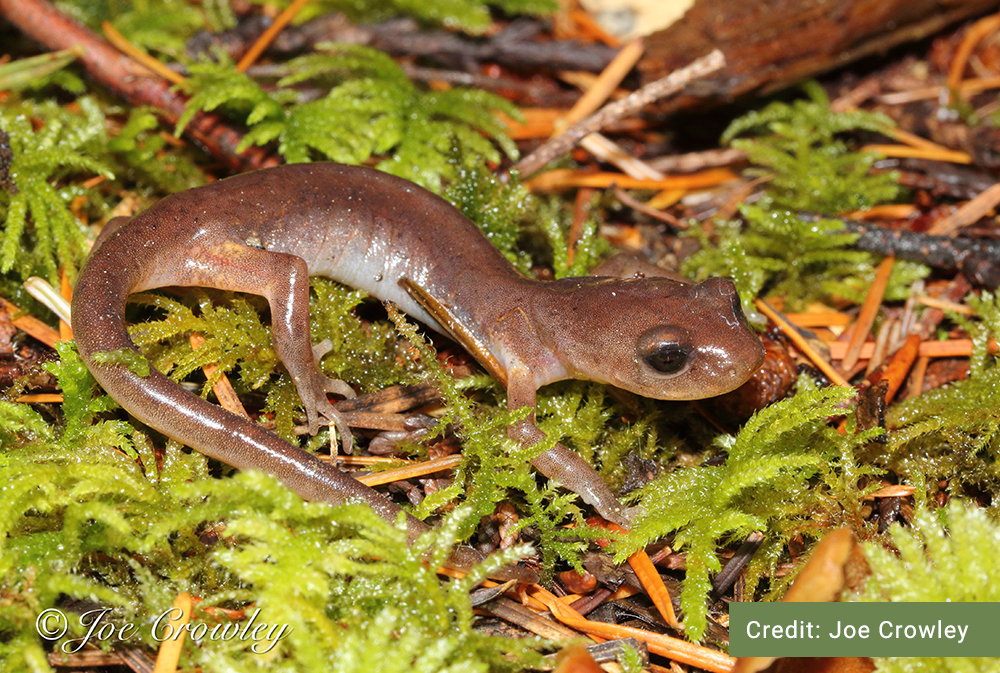
Ensatina
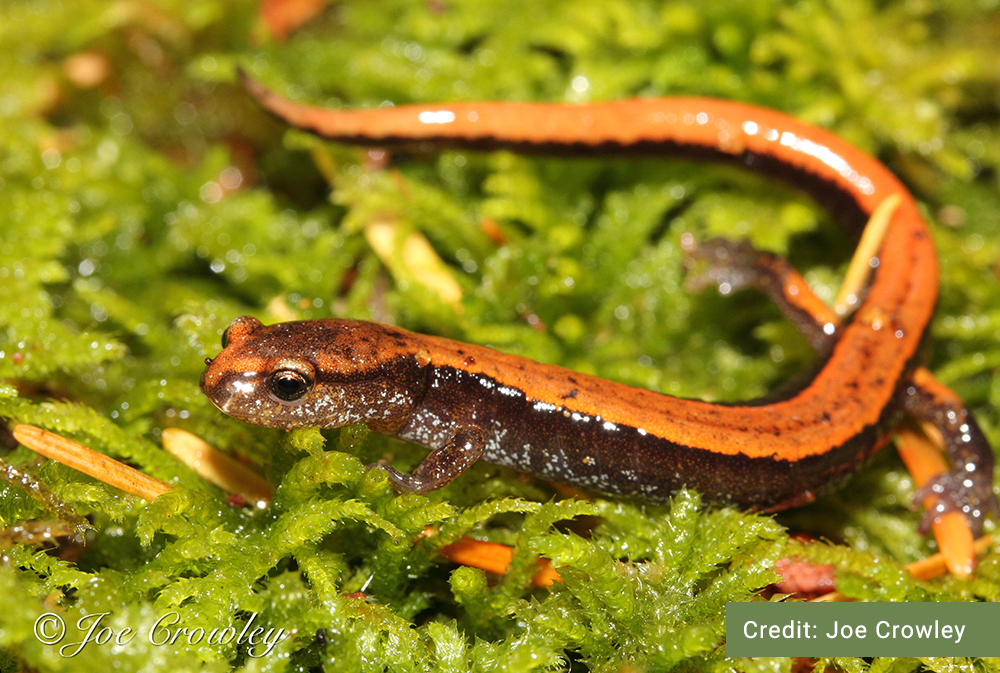
Western Red-backed Salamnder
Distribution
Habitat
Wandering Salamanders are associated with coastal mature and old-growth coniferous forests. They are typically found in forests with stands of Douglas-fir and Western Hemlock at low elevations. They require very moist environments and prefer areas with large amounts of woody debris and leaf litter. Wandering Salamanders are fully terrestrial, and deposit eggs in moist microsites in terrestrial habitats. They are very adept climbers and are often found living in trees. Wandering Salamanders will hibernateDefinition:Term to describe a period of dormancy in animals, usually as a response to low external temperatures during which most metabolic processes are slowed, including respiration and thermoregulations. overwinter below the frost line in talus slopes, mammal burrows, root hollows, and rock crevices.
Reproduction
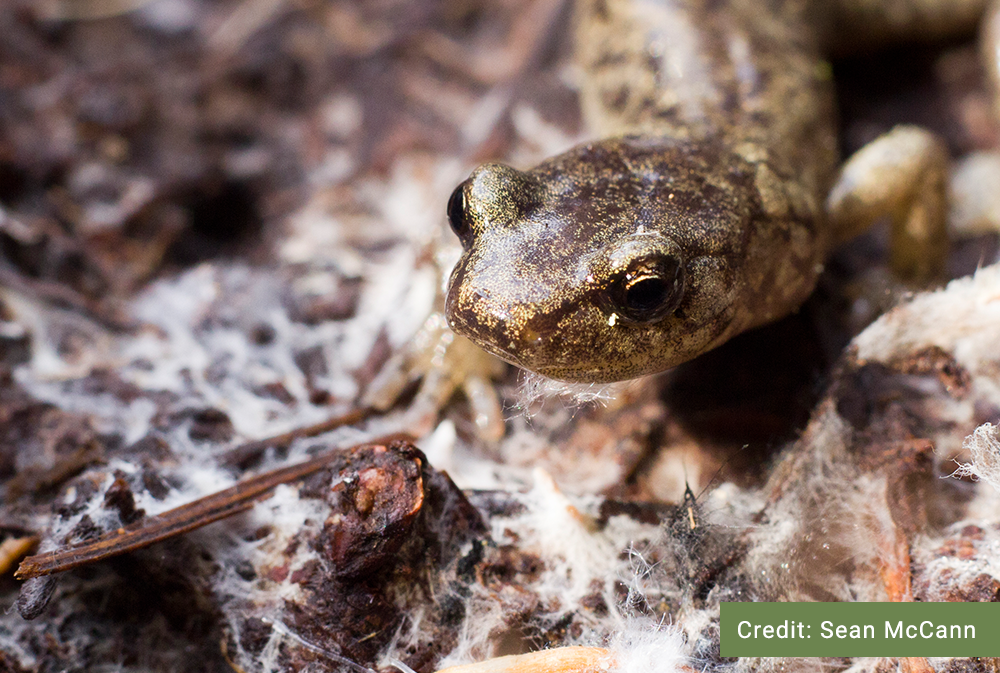
Diet
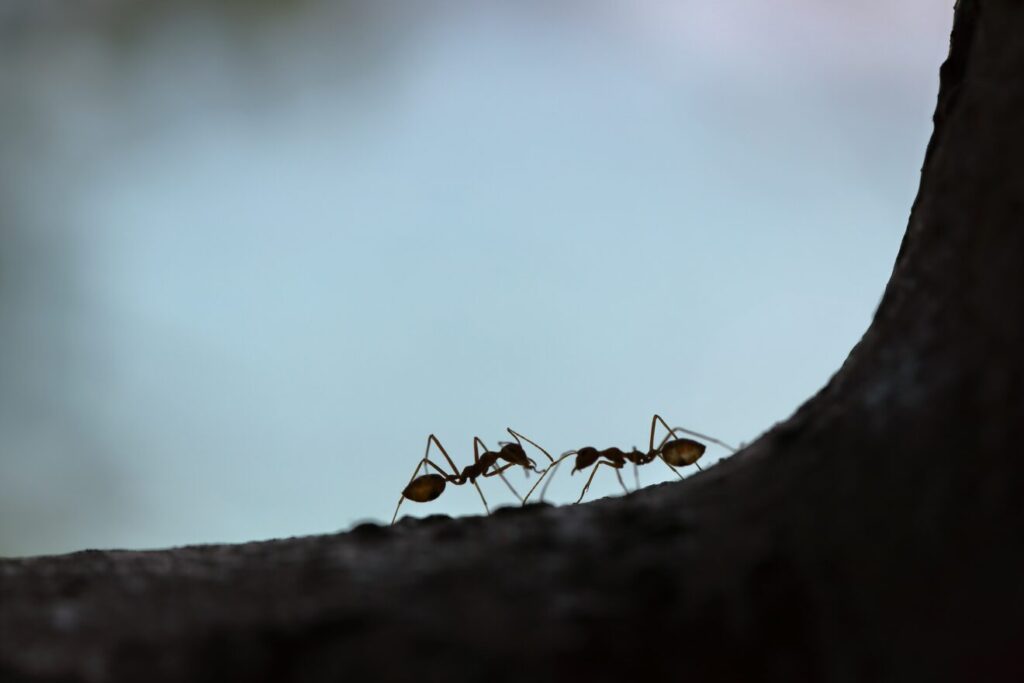
Conservation Status
Global: G4 (2005)
COSEWIC: SC
SARA:1-SC (2018)
Provincial: S3 (2016)
BC List: Blue
Learn more about conservation status rankings here
Threats
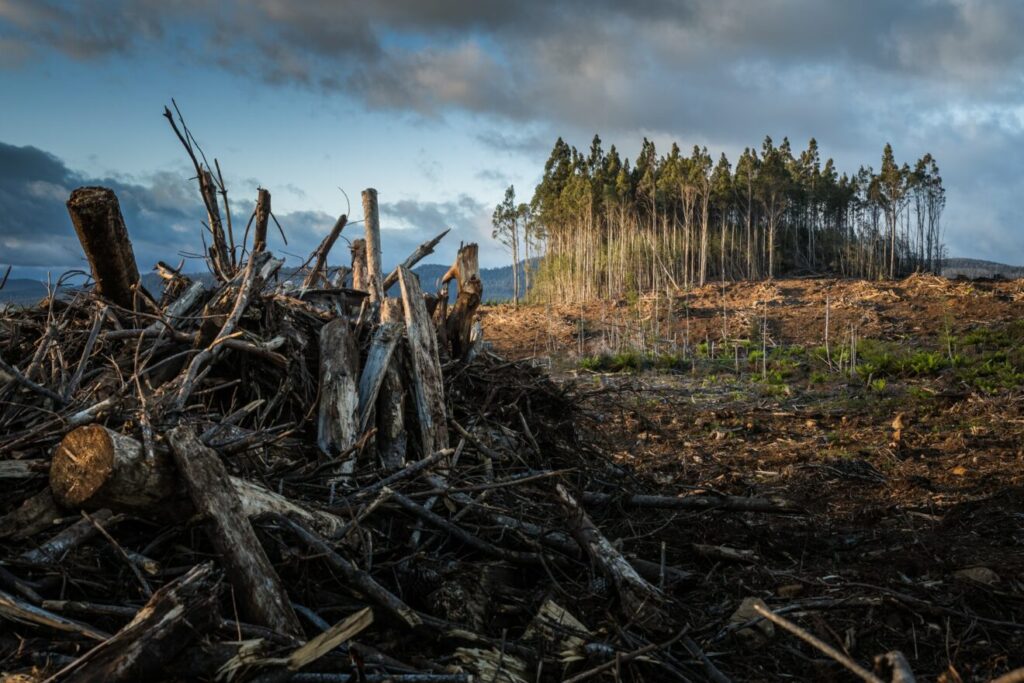
Did You Know?
Research has shown that Wandering Salamanders may spend more time in their lives in trees than on the ground. Some individuals may spend their entire lives high up in canopies in fern mats. The large, thick fern mats hold a lot of water, allowing Wandering Salamanders to stay moist year-round.
Species Account Author: Marcus Atkins
B.C. Conservation Data Centre. 2003. Species Summary: Aneides vagrans. B.C. Minist. of Environment. Available: https://a100.gov.bc.ca/pub/eswp/ (accessed Jun 9, 2021).
B.C. Conservation Data Centre. 2016. Conservation Status Report: Aneides vagrans. B.C. Minist. of Environment. Available: https://a100.gov.bc.ca/pub/eswp/ (accessed Jun 9, 2021).
B.C. Conservation Data Centre. 2021. BC Species and Ecosystems Explorer. B.C. Minist. of Environ. Victoria, B.C. Available: https://a100.gov.bc.ca/pub/eswp/ (accessed Jun 9, 2021).
COSEWIC. 2014l. COSEWIC assessment and status report on the Wandering Salamander Aneides vagrans in Canada. Committee on the Status of Endangered Wildlife in Canada. Ottawa. xi + 44 pp.
Spickler, James C.; Sillett, Stephen C.; Marks, Sharyn B.; Welsh Jr., Hartwell H. 2006. Evidence of a new niche for a North American salamander: Aneides vagrans residing in the canopy of old-growth redwood forest. Herpetological Conservation and Biology, Vol. 1(1): 16-27.
http://www.canadianherpetology.ca/species/species_page.html?cname=Wandering%20Salamander
http://linnet.geog.ubc.ca/efauna/Atlas/Atlas.aspx?sciname=Aneides%20vagrans

